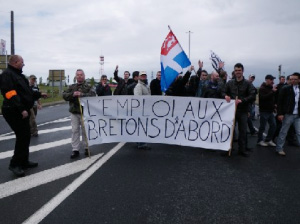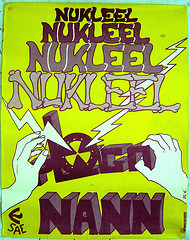 |
Peoples' movements and protests |
 |
|
MobilizationsLatin American wars of independenceNorth American war of independenceSlave uprising in HaitiIrish nationalism and Sinn FéinRussian revolutionIndia independence movementChinese revolutionAlgerian war of independencePalestinian movementVietnam warBreton movementBasque movementNorwegian opposition to EUTo National movementsTo main page |
The Breton movement
Celtic Brittany is one of the poorest areas in highly centralized France. As early as the beginning of the 20th century, a national Breton movement was formed that was inspired by Irish role models. Among other things they wanted, without much success, to create a Breton cultural renaissance following the pattern of the Irish. This movement was anti-modern, i.e defined Brittany’s peripheral status as a result of industrial development. That could be true, but one consequence of this was that it sought its leadership in the traditional Breton upper class – large landowners and the church – and also saw Breton workers as enemies. This resulted, among other things, in the movement cooperating with fascists and with the German occupying forces during the war. After the war, therefore, this movement was discredited. Instead, an informal Breton alliance emerged between parliamentarians from all parties with economic goals. It was limited in effectiveness until De Gaulle’s takeover, when the state apparatus was centralized and individual parliamentarians lost influence. Instead, it was the peasant movement that took the initiative. It was Brittany’s farmers who in 1955 invented the method of dumping food on city streets in protest at low prices. In connection with the general uprising in France in 1968, an alliance between workers’, peasants’ and youth movements in Brittany could use the farmers’ experiences and define Brittany's situation as colonial. In the 1970s, there was a broad mobilization against the power of Paris, in the form of union struggle (workers demanded Paris wages), municipal opposition to the central government project (the most famous was opposition to a planned nuclear power plant in Plogoff) and also the cultural Breton renaissance as the interwar movement had dreamed of but could not realize. The various resistances were bound together by a cultural movement that liked to use the Celtic language as a symbol of resistance. In connection with the long recession after 1973 and the increased efforts of those in power to shift the losses to the lower classes and peripheries, the Breton movement has also become less efficient. It has contributed to a certain increase in regional self-government in France, i.e increased political power. But economic power is as far away as ever.
Reading
|

